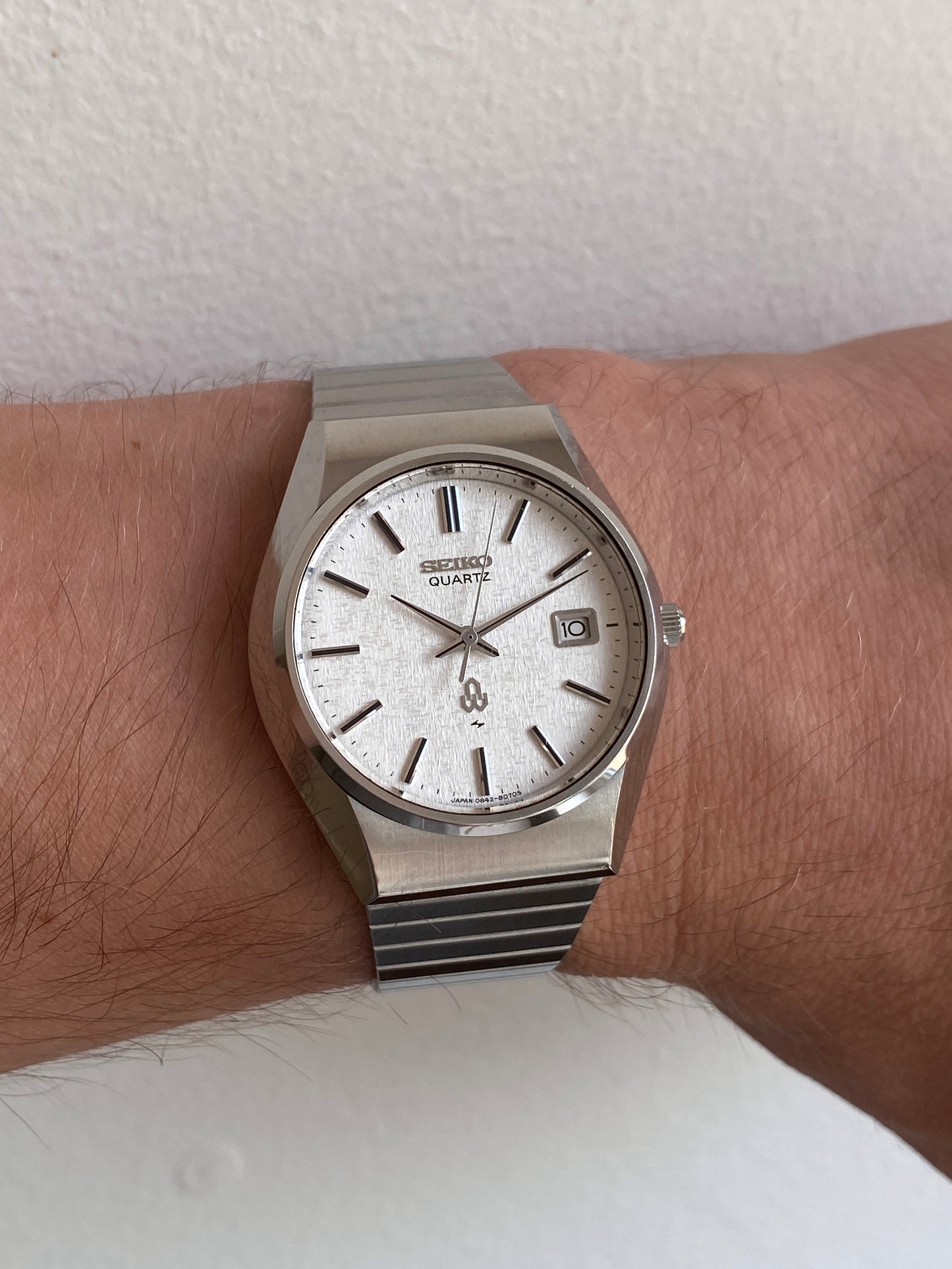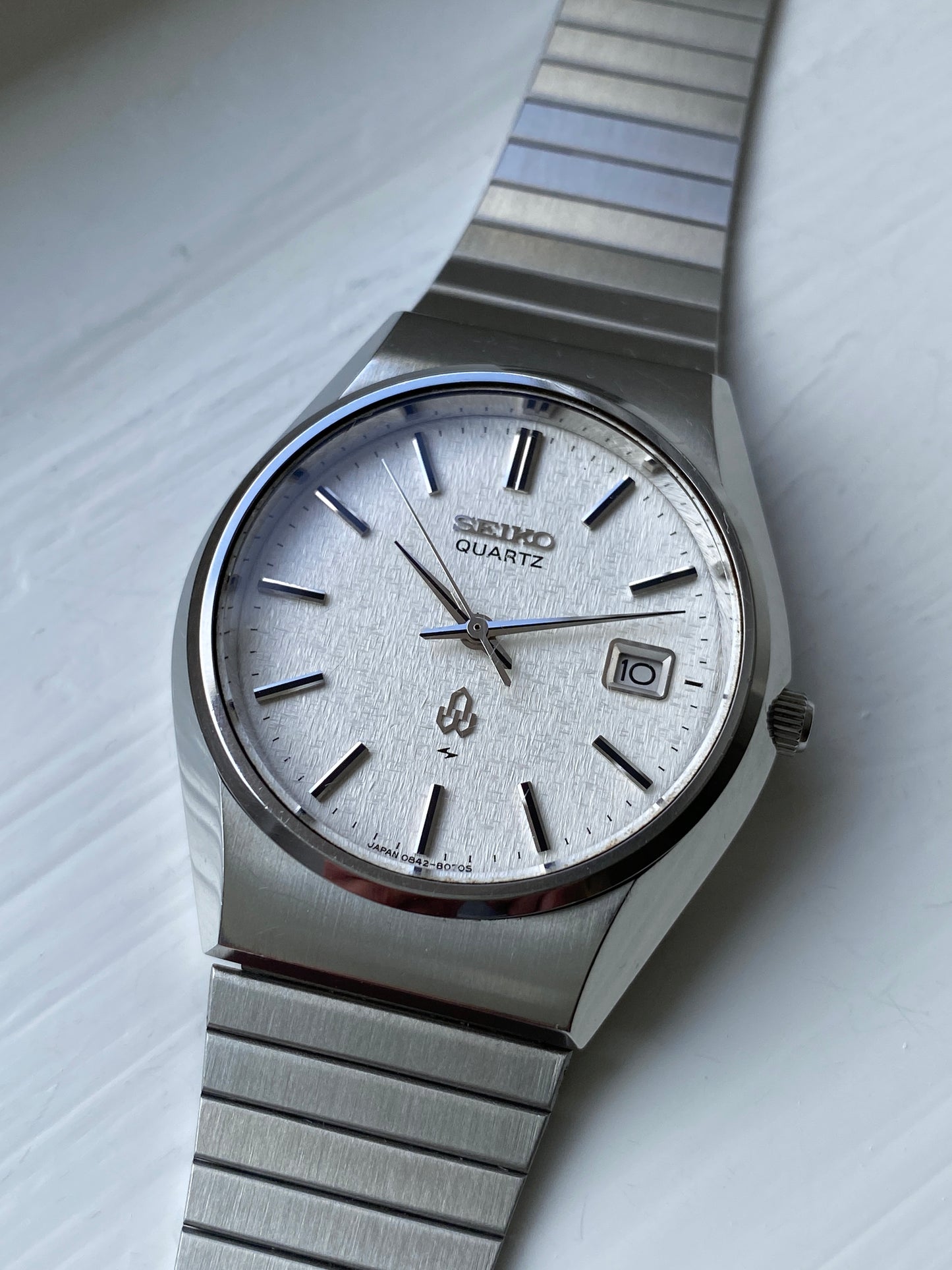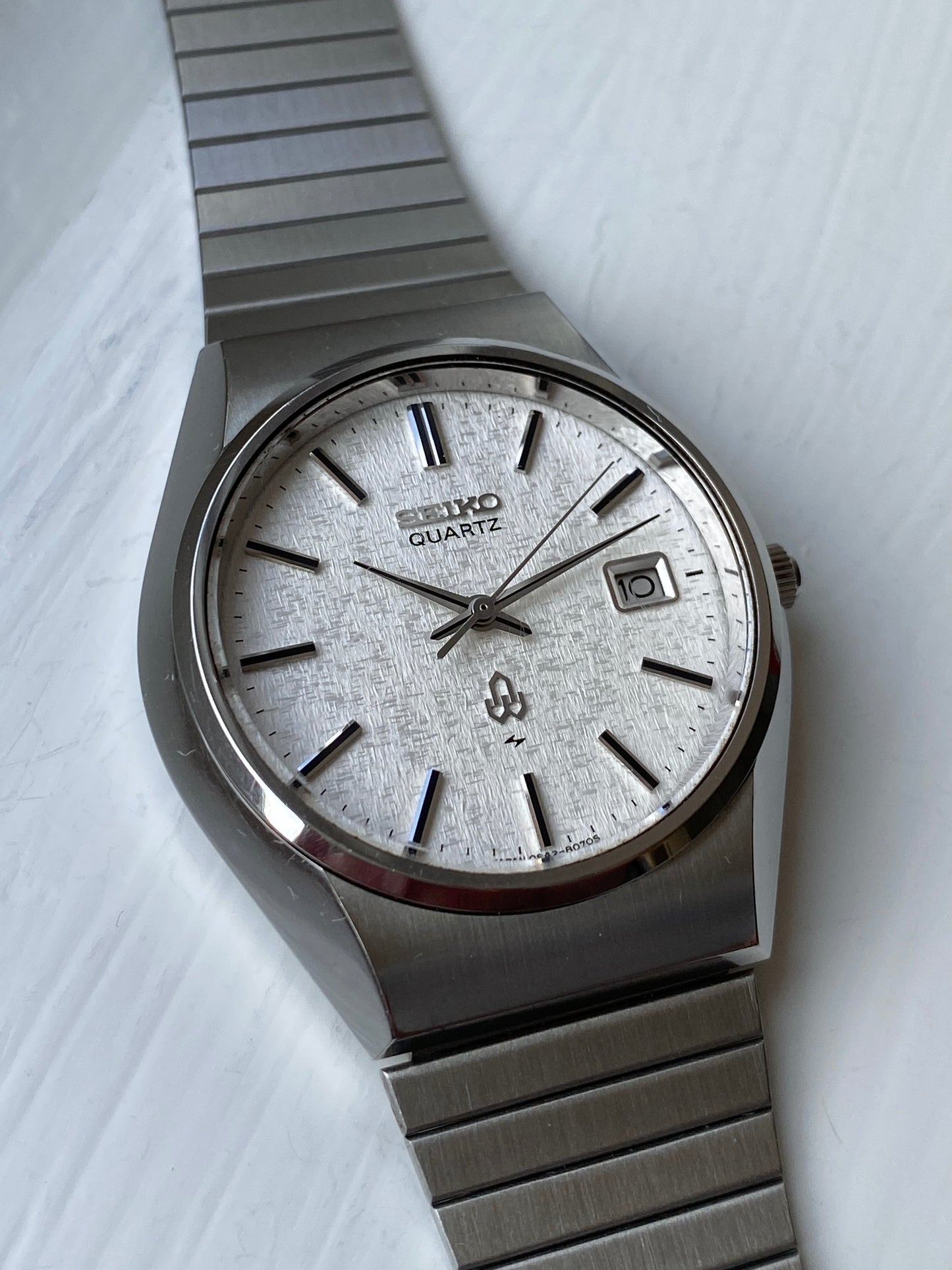Seiko Quartz 0842-8070 'Snowflake'
Seiko Quartz 0842-8070 'Snowflake'
Couldn't load pickup availability
|
Brand |
Seiko |
|
Model |
Quartz |
|
Reference |
0842-8070 |
|
Year |
1976 - April |
|
Movement |
Quartz |
|
Dial |
Snowflake |
|
Jewels |
7 |
|
Case |
37mm |
|
Lugs |
18mm |
|
Day/date |
Day |
|
Crystal |
Mineral |
|
Bracelet |
Aftermarket | Fits any wrist size |
|
Performance |
±15 seconds per month |
|
Box&papers |
Not included |
|
Condition |
Excellent |
The watch
At Studio Tokei we love textured dials, like the snowflake/crosshatch dial on this Seiko Quartz 0842-8070.
The watch is in excellent unpolished condition with only a few signs of use. The (original) crystal has some minor scratches.
The bracelet is aftermarket but fits the style of the case very well. It can be easily adjusted to fit your wrist. Simply use a small screwdriver to lift the clasp and secure it at your desired length.
Details
The 0842 is a solid quartz movement with hacking function and a date display. Quality-wise, this is basically a King Quartz.
The quartz crisis
The "quartz crisis," also known as the "quartz revolution," refers to a period in the late 20th century when the Swiss watch industry faced significant upheaval due to the rise of quartz technology. This technological shift began in the 1960s and 1970s, primarily driven by Japanese companies like Seiko.
Quartz watches, which use a battery-powered quartz crystal to keep time, offered several advantages over traditional mechanical watches. They were more accurate, less expensive to produce, and required less maintenance. Seiko, a pioneer in quartz technology, introduced the world's first quartz watch, the Astron, in 1969. This innovation demonstrated that quartz watches could offer precision and affordability, challenging the long-standing dominance of Swiss mechanical watches.
The Swiss watch industry, which had long been revered for its craftsmanship and mechanical expertise, struggled to adapt to this new technology. Many Swiss companies initially underestimated the impact of quartz watches and were slow to innovate. As a result, they faced financial difficulties and market share losses. The quartz crisis led to the decline or bankruptcy of several traditional Swiss watchmakers and forced the industry to undergo significant restructuring.
Ultimately, the it reshaped the watch industry, leading to a renewed focus on innovation and a blend of traditional and modern technologies. The Swiss watch industry eventually rebounded by incorporating quartz technology alongside their mechanical expertise.













The watch arrived in excellent condition and I‘m happy to have gotten it. The dial is very beautiful and less intense as thought. Still very delicate and interesting to look at !
At first glance the watch looks like a King Quartz but if you look closer, there is no mentioning of that type name. Why is that ?
The caliber 0842 is therefore quite interesting. It marks the end of the QT lineup and was only labeled as a Seiko Quartz. It has a trimmercondensor, so it can be adjusted like other King Quartzes. In fact the almost identical movement 0852 was the first watch labeled as King Quartz.
That‘s why in fact this watch is a hidden King !













